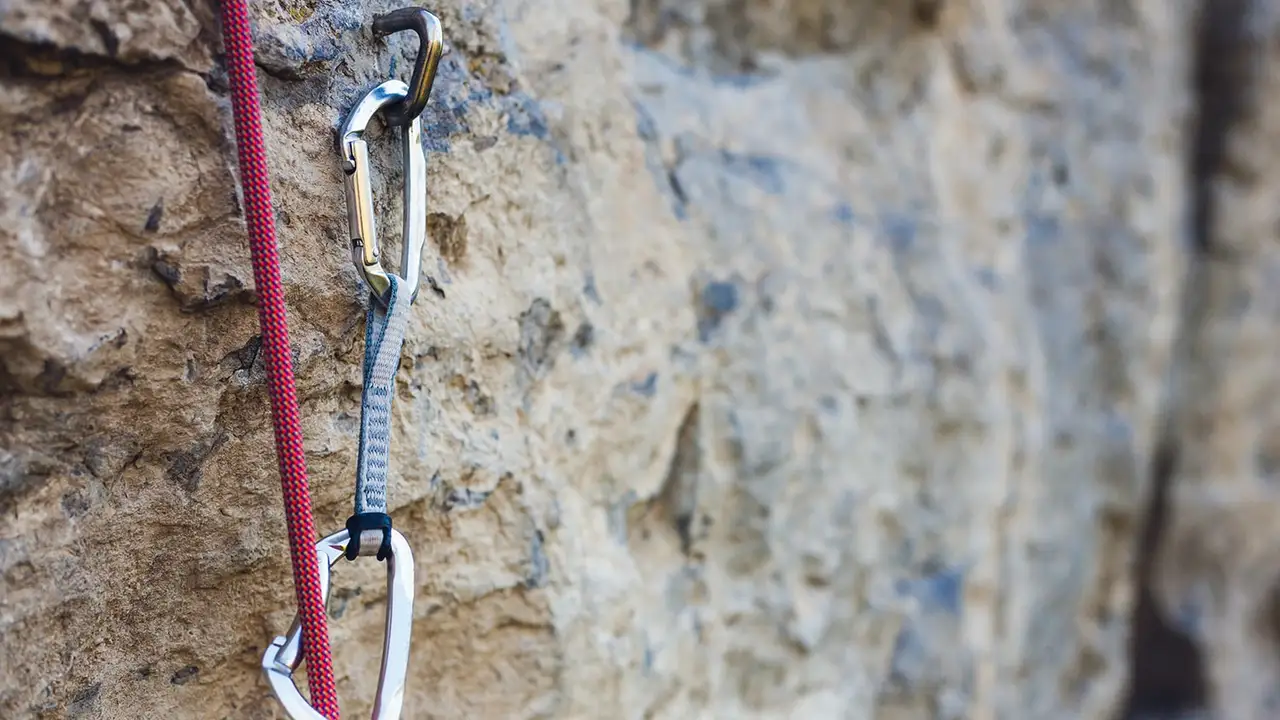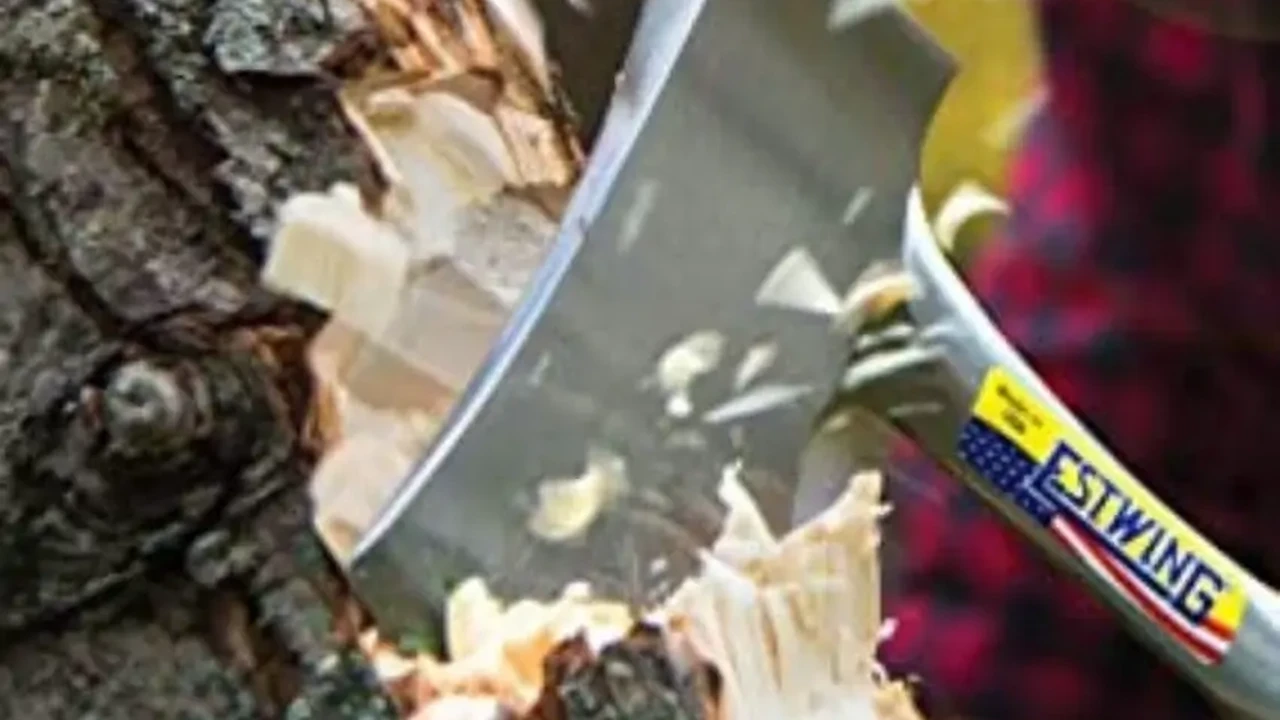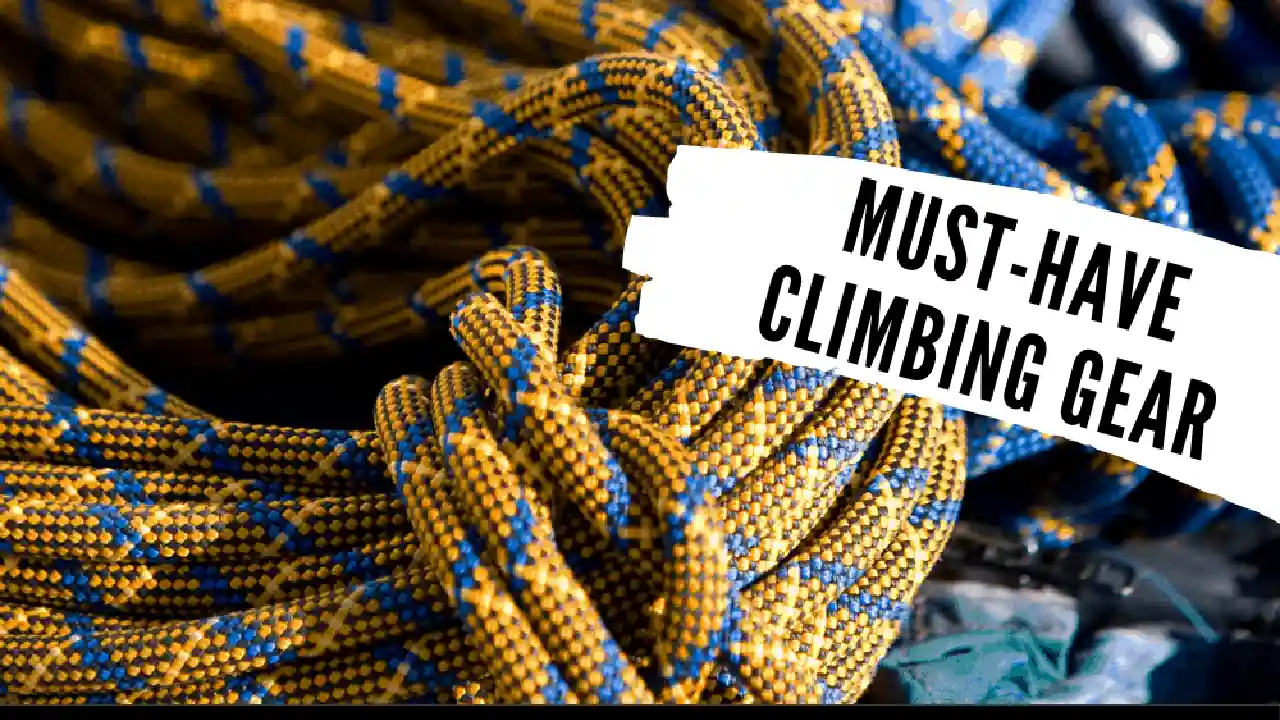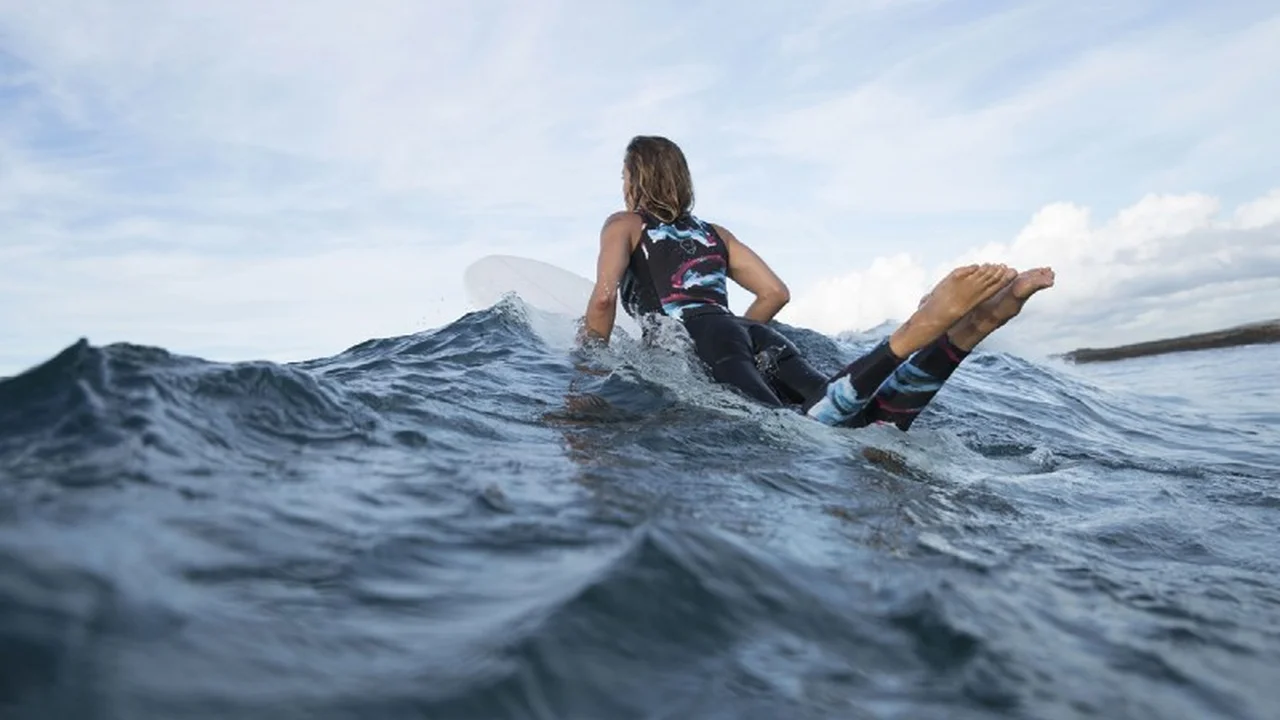Choosing the Right Carabiners for Climbing
Guide to choosing the right gloves for cold weather activities. Compare insulation, waterproofing, and dexterity for skiing, climbing, and more.

Choosing the Right Gloves for Cold Weather Activities
When the temperatures drop and the snow starts to fall, having the right pair of gloves isn't just about comfort; it's about safety and performance. Whether you're hitting the slopes, scaling an icy peak, or simply enjoying a winter hike, your hands are often the first to feel the chill. Choosing the right gloves for cold weather activities can be a daunting task with so many options available. This comprehensive guide will walk you through everything you need to know, from insulation types and waterproofing to dexterity and specific activity considerations. We'll also recommend some top products to help you make an informed decision.
Understanding Glove Construction and Materials for Optimal Warmth
The effectiveness of a glove in cold weather largely depends on its construction and the materials used. It's not just about thickness; it's about how well the materials trap heat, repel moisture, and allow your hands to breathe.
Insulation Types for Cold Weather Gloves: Down vs Synthetic
Insulation is the core component that keeps your hands warm. There are two primary types:
Down Insulation: Lightweight Warmth for Dry Cold
Down, typically goose or duck feathers, offers an excellent warmth-to-weight ratio. It's incredibly compressible, making gloves easy to pack. However, down loses its insulating properties when wet, which is a significant drawback in snowy or rainy conditions. Some manufacturers treat down with a water-resistant coating to mitigate this, but it's still best suited for dry, cold environments.
Synthetic Insulation: Performance in Wet Conditions
Synthetic insulations, such as PrimaLoft, Thinsulate, or Gore-Tex Warm, are designed to mimic down's warmth while performing better in damp conditions. They retain most of their insulating power even when wet and dry faster than down. Synthetic insulation tends to be bulkier and heavier than down for the same warmth level, but its versatility makes it a popular choice for a wide range of cold-weather activities.
Waterproofing and Breathability: Staying Dry and Comfortable
Keeping your hands dry is just as important as keeping them warm. Wet hands lose heat much faster than dry hands. Look for gloves with a waterproof and breathable membrane.
Gore-Tex and Other Waterproof Membranes: Essential for Wet Environments
Gore-Tex is the most well-known waterproof and breathable membrane, but many other brands offer similar technologies (e.g., eVent, DryVent, Pertex Shield). These membranes have microscopic pores that are too small for water droplets to pass through but large enough for water vapor (sweat) to escape. This keeps external moisture out while allowing internal moisture to evaporate, preventing clamminess and maintaining warmth.
Durable Water Repellent DWR Coating: First Line of Defense
Many gloves also feature a Durable Water Repellent (DWR) coating on the outer fabric. This causes water to bead up and roll off the surface, preventing the fabric from becoming saturated. While DWR is effective, it wears off over time and needs to be reapplied periodically.
Outer Shell Materials: Durability and Protection
The outer shell of a glove needs to be durable enough to withstand abrasion and provide an additional layer of protection against the elements.
Nylon and Polyester: Common and Durable Outer Fabrics
Most glove shells are made from synthetic fabrics like nylon or polyester. These materials are often treated with DWR and can be woven in various ways to enhance durability, such as ripstop patterns. They offer good abrasion resistance and are relatively lightweight.
Leather: Superior Grip and Dexterity
Leather, particularly goat leather or cowhide, is often used on the palms and fingers of gloves. It offers excellent grip, durability, and a good feel for handling gear. Leather can be treated for water resistance, but it generally requires more care than synthetic materials to maintain its properties.
Lining Materials: Comfort and Moisture Wicking
The inner lining of a glove is crucial for comfort and managing moisture from sweat.
Fleece and Wool Linings: Softness and Warmth
Soft fleece or wool linings provide next-to-skin comfort and add an extra layer of warmth. They also help wick moisture away from your skin, keeping your hands dry.
Moisture-Wicking Fabrics: Preventing Clamminess
Some gloves incorporate specific moisture-wicking fabrics in their lining to actively pull sweat away from your hands, which is essential for preventing cold and clammy hands during high-exertion activities.
Glove Types and Features for Specific Activities: Matching Your Needs
Not all cold-weather activities are created equal, and neither are the gloves designed for them. Understanding the nuances of different glove types and features will help you select the perfect pair for your adventures.
Skiing and Snowboarding Gloves: Warmth, Durability, and Grip
For skiing and snowboarding, you need gloves that offer a balance of warmth, waterproofing, and durability. Look for:
- Long Gauntlets: These extend over your jacket cuffs to prevent snow from entering.
- Wrist Leashes: Keep your gloves attached to your wrists when you take them off, preventing loss on the lift or slopes.
- Reinforced Palms: Often with leather or synthetic leather for grip on poles and durability.
- Nose Wipes: A soft patch on the thumb for wiping a runny nose.
Mountaineering and Ice Climbing Gloves: Dexterity and Protection
Mountaineering and ice climbing demand high levels of dexterity for handling ropes, ice axes, and carabiners, combined with robust protection against extreme cold and abrasion. Often, a layering system of gloves is preferred:
- Thin Liner Gloves: For warmth and dexterity when performing intricate tasks.
- Mid-Weight Gloves: For general use and moderate cold.
- Heavyweight Gauntlet Mittens: For extreme cold and belaying, often with removable liners.
- Durable Outer Shells: Highly abrasion-resistant materials are crucial.
Winter Hiking and Backpacking Gloves: Versatility and Comfort
For winter hiking and backpacking, versatility is key. You'll likely experience varying levels of exertion and temperatures. Look for:
- Mid-Weight Insulation: Enough warmth without being overly bulky.
- Good Breathability: To manage sweat during uphill climbs.
- Touchscreen Compatibility: Increasingly important for using phones or GPS devices without removing gloves.
- Layering Options: Consider a system with a thin liner and a waterproof outer shell.
Everyday Winter Wear Gloves: Style and Practicality
For casual winter use, you might prioritize style and practicality over extreme technical features. However, warmth and some level of water resistance are still important.
- Stylish Designs: Many options blend fashion with function.
- Touchscreen Compatibility: A must-have for daily use.
- Comfortable Linings: Soft and cozy materials for extended wear.
Key Considerations When Choosing Cold Weather Gloves: Fit, Dexterity, and More
Beyond materials and activity-specific features, several other factors play a crucial role in selecting the right gloves.
Fit and Sizing: Crucial for Warmth and Dexterity
A proper fit is paramount. Gloves that are too tight will restrict blood flow, making your hands colder. Gloves that are too loose will allow cold air to enter and reduce dexterity. You should have a small amount of space at the end of your fingers, allowing for air circulation and preventing your fingertips from pressing against the cold outer shell. Try on gloves with any liners you plan to use.
Dexterity: Handling Gear with Ease
Dexterity refers to your ability to perform fine motor tasks while wearing gloves. This is especially important for activities like climbing, photography, or adjusting ski bindings. Mittens are warmer but offer less dexterity than gloves. Some gloves feature pre-curved fingers or articulated designs to improve dexterity.
Cuff Style: Gauntlet vs Under-Cuff
The cuff style affects how well the glove integrates with your jacket sleeve:
- Gauntlet Cuffs: Long cuffs that go over your jacket sleeve, providing maximum snow protection. Common in ski and snowboard gloves.
- Under-Cuff: Shorter cuffs that fit inside your jacket sleeve, offering a cleaner look and less bulk. Often found in hiking or everyday gloves.
Touchscreen Compatibility: Modern Convenience
Many modern gloves feature conductive material on the fingertips, allowing you to use touchscreens without removing your gloves. This is a huge convenience for checking maps, taking photos, or answering calls in cold weather.
Glove vs Mitten vs 3-Finger Glove: Warmth vs Dexterity Trade-off
- Gloves: Offer the best dexterity, allowing individual finger movement.
- Mittens: Keep your fingers together, allowing them to share warmth, making them the warmest option. However, dexterity is significantly reduced.
- 3-Finger Gloves (Lobster Mittens): A hybrid design that groups the index and middle fingers together, offering a compromise between warmth and dexterity.
Top Recommended Cold Weather Gloves: Product Reviews and Comparisons
To help you narrow down your choices, here are some highly-rated gloves across different categories, complete with their typical use cases, pros, cons, and approximate price ranges.
1. Hestra Army Leather Heli Ski Glove: The All-Rounder for Skiing and Snowboarding
Use Case: Skiing, snowboarding, general winter outdoor activities in cold to very cold conditions. Known for its exceptional warmth and durability.
Features:
- Insulation: Fiberfill (synthetic) for reliable warmth even when damp.
- Outer Material: Hestra Triton polyamide fabric (windproof, waterproof, breathable) with Army Goat Leather palm and fingers for superior grip and durability.
- Waterproofing: CZone membrane for excellent waterproofing and breathability.
- Cuff: Long gauntlet cuff with snow lock and Velcro strap.
- Other: Removable 5-finger liner (can be washed or replaced), wrist leash, carabiner.
Pros:
- Extremely warm and durable, built to last many seasons.
- Excellent waterproofing and breathability.
- Removable liner adds versatility and makes drying easier.
- Superb grip and feel thanks to the leather palm.
Cons:
- Higher price point.
- Can be a bit bulky for some users, slightly reducing dexterity compared to thinner gloves.
Approximate Price: $150 - $200 USD
2. Black Diamond Guide Gloves: Mountaineering and Ice Climbing Workhorse
Use Case: Serious mountaineering, ice climbing, and backcountry skiing in harsh, cold conditions where durability and protection are paramount.
Features:
- Insulation: Removable liner with 170g PrimaLoft Gold and boiled wool for maximum warmth.
- Outer Material: Woven nylon shell with a four-way stretch for flexibility, and a goat leather palm and finger construction.
- Waterproofing: GORE-TEX insert for reliable waterproof and breathable performance.
- Cuff: Long gauntlet cuff with a drawcord closure.
- Other: EVA padding on knuckles for impact protection, carabiner loop.
Pros:
- One of the warmest and most durable gloves on the market.
- Excellent protection against extreme cold and abrasion.
- Removable liner allows for quick drying and layering.
- Good dexterity for a glove of its warmth level.
Cons:
- Very expensive.
- Can feel bulky for some users, especially those with smaller hands.
- Not ideal for activities requiring very high dexterity.
Approximate Price: $170 - $220 USD
3. Outdoor Research Arete Gloves: Versatile 3-in-1 for Hiking and Backpacking
Use Case: Winter hiking, backpacking, snowshoeing, and general cold-weather outdoor activities where versatility and layering are beneficial.
Features:
- Insulation: Removable liner glove with 100-weight fleece.
- Outer Material: Pertex Shield+ fabric for the shell, with a goat leather palm.
- Waterproofing: GORE-TEX insert in the shell for waterproof and breathable protection.
- Cuff: Under-cuff design with a ladder-lock wrist cinch.
- Other: Touchscreen compatible liner, carabiner loop.
Pros:
- Highly versatile 3-in-1 system (shell, liner, or both).
- Good balance of warmth, waterproofing, and dexterity.
- Liner is touchscreen compatible.
- More affordable than some high-end options.
Cons:
- Not as warm as dedicated expedition gloves for extreme cold.
- The liner can sometimes feel a bit loose inside the shell.
Approximate Price: $90 - $120 USD
4. Seirus Heatwave Accel Glove: Innovative Warmth for Active Users
Use Case: Skiing, snowboarding, and other active winter sports where you need warmth without excessive bulk, especially for those prone to cold hands.
Features:
- Insulation: PrimaLoft insulation combined with Seirus's proprietary Heatwave thermodynamic lining (reflects and amplifies body heat).
- Outer Material: Durable softshell fabric with a tough grip palm.
- Waterproofing: Waterproof/breathable insert.
- Cuff: Gauntlet cuff with a one-hand cinch.
- Other: Touchscreen compatible.
Pros:
- Excellent warmth for its relatively low bulk due to Heatwave technology.
- Good dexterity for an insulated glove.
- Reliable waterproofing.
- Comfortable and flexible.
Cons:
- Heatwave technology might not be as effective for everyone.
- Durability might not match the absolute top-tier mountaineering gloves.
Approximate Price: $80 - $110 USD
5. Gordini GORE-TEX Gauntlet Glove: Budget-Friendly Performance
Use Case: Recreational skiing, snowboarding, and general winter use for those seeking reliable performance without breaking the bank.
Features:
- Insulation: Megaloft insulation with Hydrowick microdenier lining.
- Outer Material: Durable polyester shell with a textured grip palm.
- Waterproofing: GORE-TEX insert for guaranteed waterproof and breathable performance.
- Cuff: Long gauntlet cuff with a wrist cinch and drawcord closure.
- Other: Leash.
Pros:
- Excellent value for money, offering GORE-TEX performance at a lower price.
- Good warmth for most cold conditions.
- Durable construction.
Cons:
- Dexterity is average.
- Not as feature-rich as more expensive options.
Approximate Price: $60 - $90 USD
Maintaining Your Cold Weather Gloves: Extending Their Lifespan
Proper care can significantly extend the life and performance of your gloves. Here are some tips:
Cleaning and Drying Gloves: Preserve Performance
Always follow the manufacturer's washing instructions. For most gloves, hand washing with a mild soap and lukewarm water is recommended. Avoid harsh detergents or bleach. After washing, gently squeeze out excess water and air dry away from direct heat. If your gloves have removable liners, remove them for faster and more thorough drying.
Reapplying DWR: Restore Water Repellency
Over time, the DWR coating on your gloves will wear off. You'll notice water no longer beads up but soaks into the fabric. You can restore the DWR by using a spray-on or wash-in DWR treatment specifically designed for outdoor gear. Brands like Nikwax or Granger's offer excellent products for this purpose.
Leather Care: Keeping Leather Supple and Protected
If your gloves have leather palms or fingers, they will benefit from occasional conditioning. Use a leather-specific conditioner or balm to keep the leather supple and prevent it from drying out and cracking. This also helps maintain its water resistance.
Proper Storage: Ready for Next Season
When storing your gloves for the off-season, ensure they are completely dry. Store them in a cool, dry place away from direct sunlight. Avoid compressing them for long periods, as this can damage insulation. If they have removable liners, store them separately or loosely inside the shell.
Common Mistakes to Avoid When Choosing and Using Cold Weather Gloves: Learn from Others
Even with the best intentions, it's easy to make mistakes that compromise your hand warmth and comfort. Here are some common pitfalls to avoid:
Choosing the Wrong Size: Too Tight or Too Loose
As mentioned, fit is critical. A glove that's too tight restricts blood flow, leading to cold hands. One that's too loose allows cold air to circulate and reduces dexterity. Always try on gloves, ideally with any liners you plan to use, and ensure a comfortable, snug fit with a little room at the fingertips.
Underestimating the Cold: Not Enough Insulation
It's better to be slightly over-insulated than under-insulated. If you're unsure about the conditions, opt for a warmer glove or a layering system. You can always take off a layer, but you can't add warmth that isn't there.
Ignoring Waterproofing: Wet Hands Get Cold Fast
Even in seemingly dry snow, your gloves can get wet from melting snow or sweat. Always prioritize gloves with good waterproofing and breathability, especially if you'll be in contact with snow or ice.
Forgetting About Dexterity Needs: Frustration on the Slopes
Consider what tasks you'll need to perform with your gloves on. If you need to adjust bindings, use a camera, or handle ropes, prioritize gloves that offer good dexterity. Sometimes, a thinner, more dexterous glove with a warmer liner is better than a single bulky glove.
Neglecting Care and Maintenance: Shortening Glove Lifespan
Skipping cleaning, re-waterproofing, or leather conditioning will significantly shorten the lifespan of your gloves and reduce their performance. Treat your gear well, and it will treat you well in return.
Not Layering When Appropriate: One Glove Does Not Fit All Conditions
For highly variable conditions or multi-day trips, a layering system (liner + shell + insulated glove/mitten) offers the most versatility. This allows you to adapt to changing temperatures and activity levels, ensuring your hands stay comfortable and warm throughout your adventure.
By understanding these factors and considering your specific needs, you'll be well-equipped to choose the perfect pair of cold-weather gloves, ensuring your hands stay warm, dry, and comfortable on all your winter adventures.
:max_bytes(150000):strip_icc()/277019-baked-pork-chops-with-cream-of-mushroom-soup-DDMFS-beauty-4x3-BG-7505-5762b731cf30447d9cbbbbbf387beafa.jpg)





